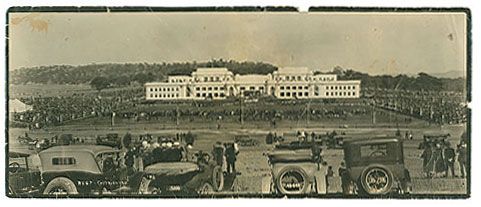Audio
Listening activity
After four days in Melbourne, Paco decides to travel to the capital city of Australia, Canberra, which is 650 km away from Melbourne. He decides to travel by train, and on his way, he talks to a business man who is going there, too. The man tells Paco about this Australian city.
Canberra, the capital city of Australia1
Paco opened his guide book and kept on reading:
The district's change from a New South Wales rural area to the national capital started during debates over Federation in the late 19th century. Following a long dispute over whether Sydney or Melbourne should be the national capital,
a compromise was reached: the new capital would be built in New South
Wales, so long as it was no closer than 160 km to Sydney, with Melbourne to be the temporary capital while the new capital was built.
1 Adapted from Wikipedia.org
Check your answers
1. According to the text, the capital city of Australia was built because there was a dispute between Sydney and Melbourne to be the national capital of Australia. They reached a compromise to build a new city, which would become the capital, in New South Wales.
2. It is known as the "bush capital" because of the huge natural vegetation that the city incorporates.
3. The Australian War Memorial, the National Gallery of Australia, the National Museum of Australia and the National Library of Australia
SCRIPT
Man: Canberra is the eighth largest city in Australia. The site
of Canberra was selected for the location of the nation's
capital in 1908 as a compromise between rivals Sydney and Melbourne.
Following an international contest for the city's design, a design by
the Chicago architects Walter Burley Griffin and Marion Mahony Griffin
was selected. No sooner was it selected than its construction commenced
in 1913.
Paco: I've read it is known as the "bush capital". Why?
Man: Well, I think it is because the city's design was heavily influenced by the garden city movement
and incorporates significant areas of natural vegetation. Although the growth and
development of Canberra were hindered by the World Wars and the Great Depression, it emerged as a thriving city after World War II.
Paco: Why has it become so important?
Man: Not only is it the seat of the government of Australia, but
it is also the
location of many social and cultural institutions of national
significance, such as the Australian War Memorial, National Gallery of
Australia, National Museum of Australia and the National Library of
Australia.
Paco: That being so, there must be many things to see there. By the way, why is it called Canberra?
Man: Well, there are several theories about that. The word
"Canberra" is said to derive from the word Kanbarra meaning "meeting
place" in the old Ngunnawal language of the local Ngabri
people. Alternatively the name was reported to mean "woman's breasts",
by journalist John Gale in the 1860s, referring to the mountains of Mount Ainslie and Black Mountain.
Paco: Where would you go first?
Man: Were I you, I would visit the National Library. You will
get astonished at the amount of books and manuscripts you can find
there.
Paco: That's an excellent idea! Seldom have I seen big
libraries. I almost always go to the one at the university. All the
books I need are there.
Man: Believe me! It is worth it! Only when you see it will you
realize what a great library it is! However, not only should you visit
it, you should also spend some time at the Parliament House, which was
opened in 1927. It is also fantastic, different from other big
buildings.
Paco: I will go there first. Is there a library like this in Melbourne?
Man: Of course! It is even bigger.
Paco: Had I known it I would have visited it. I've spent five
days in Melbourne. After Canberra I'll visit Tasmania. Then I'll go to
New Zealand.
Man: Great! But be careful! Under no circumstances should you
mention you prefer other libraries to the one in Canberra. People are
fond of their library.
Paco: Ok! Thank you very much! You're very kind.

